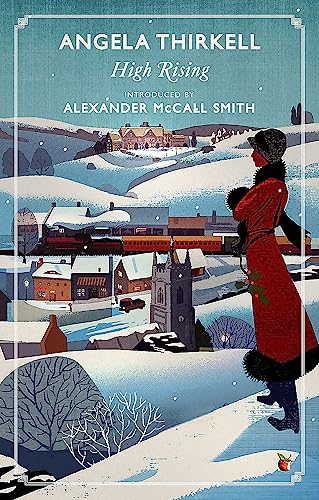
I came across Angela Thirkell a long time ago, I cannot remember when or associate her with any particular place where we have lived – and they are many. All are set in the county of Barsetshire – the Barsetshire invented by Trollope. She does not plagiarise Trollope in any way – but if you have read Trollope it is interesting to find occasionally that Trollope’s character’s descendants are still in residence. The books are not long, you might call them extended short stories. She paints character extremely well, and you know instinctively that she has met and known well real life people who have provided the material for her imagination. She has a good sense of humour and can and does send up people and organisations, but gently and without malice. The BBC comes in for criticism these days so it is interesting to read her BBC employee’s remarks in “Wild Strawberries” published in 1934, and to feel Mrs Thirkell’s sense of the ridiculous and the pretentiousness behind them. “High Rising”, illustrated above, is book No. 1 and there are 28 more to keep you going.
I find her descriptions of life during WW2 very accurate. Rationing affects everybody, and there are kind shopkeepers who keep things back under the counter because they know that there is going to be a child’s Baptism or some other special occasion and produce the goods at the right moment. She does not go anywhere near battlefields, the battlefield is definitely the local home front, but she catches the constant, nagging, worry of the women keeping things going at home and in the village as husbands and sons disappear into HM Forces and news of them is hard to come by. In one book a man who has been a prisoner of war in the Far East is located by a man who has government ‘connections’ as being still alive, and eventually returns. Another returns with a lump of metal inside him, says little, never complains, until at some later date he has to be whizzed off to the local hospital where the Surgeon has to do some tricky work to get this thing out without killing or paralysing the patient.

This I have now finished. Irene and Alan Taylor have been through many diaries and journals and some of the diarists discuss with themselves just what those words actually mean. The oldest entries are from John Evelyn and Samuel Pepys and they range through recent history as far as 1997, and the book was published in 2000.. It is a very thick book and is not deigned to be read at a sitting. I read it from the beginning , a few entries a a time, just before going to bed. But another way would be to start at the day when you first open the book and read each day’s observations as their author’s penned them. There are 170 diarists here, so a lot of work has gone into this.

